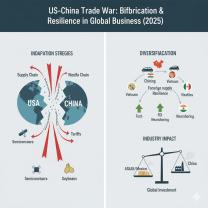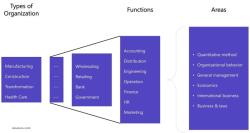What is a policy procedure?
A policy procedure, often referred to as a "policy and procedure" or simply "procedure," is a set of documented steps, guidelines, or instructions that outline how a specific policy should be implemented and followed within an organization. These procedures are a fundamental part of an organization's governance structure, helping to ensure that policies are executed consistently, efficiently, and in compliance with relevant laws and regulations.
Here are the key components and characteristics of a policy procedure:
Policy Alignment: A policy procedure is closely aligned with an organization's policies. Policies typically provide high-level principles, objectives, or rules, while procedures offer the detailed steps for achieving those policy objectives.
Detailed Instructions: Procedures provide specific, step-by-step instructions for carrying out a particular task or process. They aim to eliminate ambiguity and provide clarity to individuals responsible for implementation.
Consistency: Procedures help ensure that activities are conducted consistently across the organization. They promote uniformity in how tasks are performed, reducing the likelihood of errors or deviations from the intended process.
Compliance: Procedures are often designed to ensure that the organization complies with internal and external regulations, industry standards, and legal requirements. They help demonstrate due diligence in adhering to established norms.
Accountability: Procedures often assign roles and responsibilities to individuals or teams within the organization. This clarifies who is responsible for executing each step of the procedure.
Risk Management: Procedures can include measures to mitigate risks associated with a particular process. They may outline safety protocols, quality control checks, or contingency plans.
Documentation: Procedures should be documented in writing, making them accessible to employees or stakeholders who need to follow them. Electronic or printed manuals, handbooks, or digital documents are common formats.
Training: Organizations typically provide training on procedures to employees or relevant stakeholders to ensure they understand and can execute the steps correctly.
Examples of policy procedures can cover a wide range of organizational activities, including:
- Human Resources: Procedures for hiring, onboarding, performance reviews, and employee termination.
- IT and Cybersecurity: Procedures for data backup, system access, incident response, and network security.
- Financial: Procedures for budgeting, expense reporting, invoice processing, and financial audits.
- Health and Safety: Procedures for emergency response, workplace safety, and handling hazardous materials.
- Quality Control: Procedures for product testing, quality assurance, and process improvement.
The development and maintenance of effective policy procedures are crucial for promoting efficiency, consistency, and compliance within organizations. They provide a roadmap for employees and stakeholders to follow, ensuring that organizational objectives are met while minimizing risks and promoting accountability.












